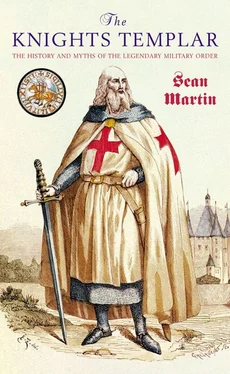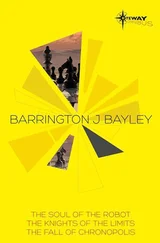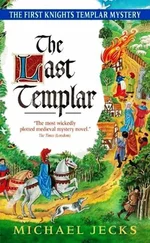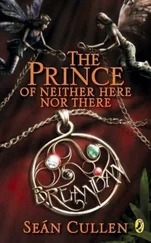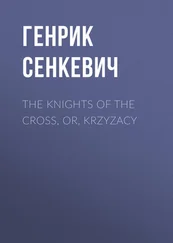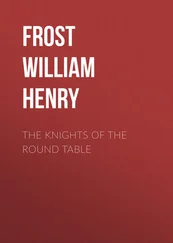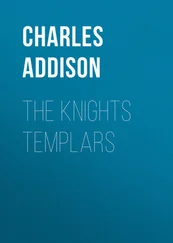Sean Martin - The Knights Templar
Здесь есть возможность читать онлайн «Sean Martin - The Knights Templar» весь текст электронной книги совершенно бесплатно (целиком полную версию без сокращений). В некоторых случаях можно слушать аудио, скачать через торрент в формате fb2 и присутствует краткое содержание. Год выпуска: 2004, ISBN: 2004, Жанр: История, на английском языке. Описание произведения, (предисловие) а так же отзывы посетителей доступны на портале библиотеки ЛибКат.
- Название:The Knights Templar
- Автор:
- Жанр:
- Год:2004
- ISBN:1-904048-28-5
- Рейтинг книги:3 / 5. Голосов: 1
-
Избранное:Добавить в избранное
- Отзывы:
-
Ваша оценка:
- 60
- 1
- 2
- 3
- 4
- 5
The Knights Templar: краткое содержание, описание и аннотация
Предлагаем к чтению аннотацию, описание, краткое содержание или предисловие (зависит от того, что написал сам автор книги «The Knights Templar»). Если вы не нашли необходимую информацию о книге — напишите в комментариях, мы постараемся отыскать её.
The Knights Templar — читать онлайн бесплатно полную книгу (весь текст) целиком
Ниже представлен текст книги, разбитый по страницам. Система сохранения места последней прочитанной страницы, позволяет с удобством читать онлайн бесплатно книгу «The Knights Templar», без необходимости каждый раз заново искать на чём Вы остановились. Поставьте закладку, и сможете в любой момент перейти на страницу, на которой закончили чтение.
Интервал:
Закладка:
If precipitating one military disaster was not enough, Gerard was to reprise his role as the one military adviser to whose advice one should do the exact opposite a matter of weeks later. As Saladin moved inexorably south towards Jerusalem, he took the city of Tiberias, trapping Raymond of Tripoli’s wife within its walls. The Franks held a council of war at Acre on 1 July. Raymond, whose rift with King Guy was now healed, advised staying put, despite the fact that his wife was held by the enemy, as Saladin’s army was too big to engage successfully. The king seemed to be in agreement until, later that night, Gerard advised an attack, convincing the king that it would be shameful to sacrifice Tiberias. Whether Gerard’s advice was due to a near-suicidal streak in the Grand Master, or whether it was because he hated Raymond and couldn’t bear the thought of agreeing to anything the Count of Tripoli suggested, he managed to change the king’s mind.
The crusader army marched north at dawn, until it reached the village of Lubiya. They were constantly harried by Muslim archers, and were suffering greatly from thirst. The Templars, who formed the rearguard, asked if they could stop for the night. Whether the request came directly from Gerard it is not known, but King Guy agreed.
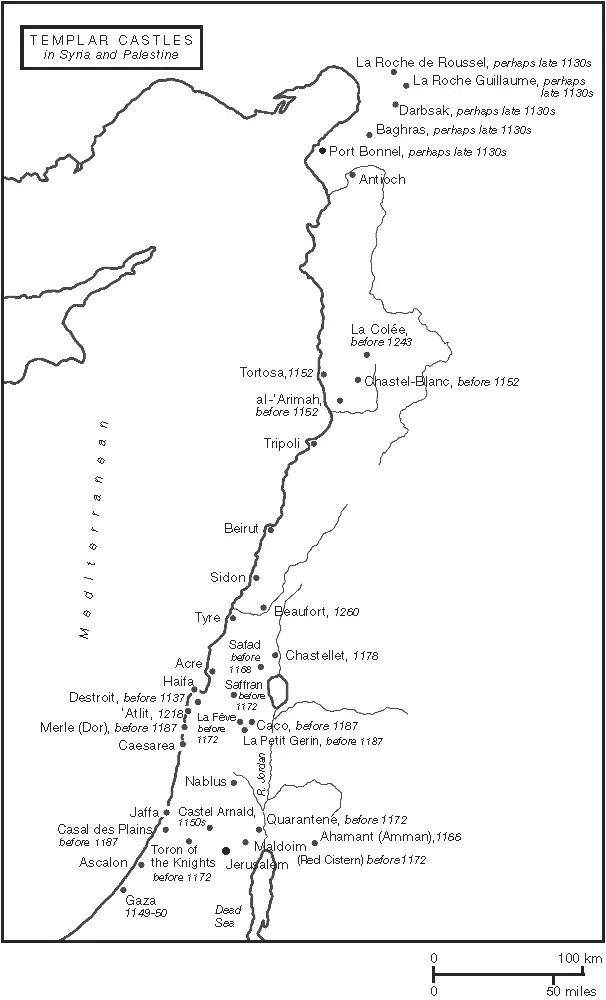
Raymond, who was leading the vanguard, is alleged to have said when he heard this, ‘Lord God, the war is over. We are dead men. The kingdom is finished.’ The army was camped on an arid hill known as the Horns of Hattin and they had no water; the well was dry. During the night, Saladin’s men set fire to the scrub at the foot of the hill, and the breeze carried it upwards, choking the Franks. At dawn on 4 July, Saladin’s forces attacked. Crippled by the summer heat, thirst and smoke, the crusader army stood no chance. It was a disaster greater even than Cresson.
Muslim custom decrees that a man who is offered food or water shall be spared. After his capture, Saladin offered a glass of water to King Guy, who gratefully accepted it. The glass was not offered to Reginald of Chatillon, the most hated man in the whole of the East; instead, Reginald was offered the choice of conversion or death, and he refused to convert. Saladin wasted no more time and personally decapitated him. The Templar and Hospitaller captives were given the same ultimatum – apostasy or death. Saladin’s hatred of the military orders was founded upon his belief that they were the most fanatical of the Frankish warriors, and the aftermath of Hattin proved him right. The Templars were so eager for martyrdom that there was almost a stampede to be the first to be beheaded. All 230 Templar prisoners – and those of the Hospital – were executed. Only Gerard de Ridefort was spared.
After Hattin, it was only a matter of time before Jerusalem itself was in Saladin’s hands. The week after Hattin, Acre fell, followed in September by Ascalon and Gaza. Finally, on 2 October 1187, Saladin entered Jerusalem. He allowed the Church of the Holy Sepulchre to remain in Christian hands, but the cross from the Dome of the Rock was taken down and dragged through the streets where it was trampled upon and beaten with sticks. Although a small contingent of non-military Hospitallers were allowed to remain for a limited time in the Hospital to continue the work they had originally been founded for – the care of sick pilgrims – the Templars were forced to surrender their headquarters at the al-Aqsa mosque. They would never set foot there again.
The Third Crusade
Europe reacted with horror to the news that Jerusalem was lost. With Gerard de Ridefort in captivity, the Templar Grand Commander Brother Terence assumed leadership of the Order, and his two letters – the first written a matter of weeks after Hattin, the second in January 1188 – described the disasters that had befallen Outremer:
‘How many and how great the calamities with which the anger of God has permitted us to be scourged at this present time, as a consequence of our sins, we can explain neither by letters nor by tearful voice.’ 16 16 Quoted in Barber, op. cit., p.115.
He goes on to write about Hattin and the loss of Acre, saying that Christian forces cannot hold out much longer ‘unless we immediately receive divine aid and your [i.e. Western] help’ as the infidel are ‘cover[ing] the entire face of the land … like ants’. 17 17 Barber, ibid ., p.116.
The letter was nominally addressed to Pope Urban III and to Philip of Alsace, Count of Flanders, the only major European leader who had visited the East that decade, but was also intended to be circulated as widely as possible. It reached Urban at Verona, delivered by Templar couriers, and it had a devastating effect; so much so that it probably hastened Urban’s end. His successor, Gregory VIII, was already ancient and only reigned for two months, yet in that time, he called for the kings of Europe to cease fighting one another for seven years and devote themselves instead to freeing the East from the oppression of the infidel. King William II of Sicily, who, when he first heard the news, replaced his regal attire with sackcloth and went into retreat, at once sent a fleet of galleys to relieve Antioch. Something akin to the righteous furore surrounding the First Crusade began to sweep through Europe, with the Crusade being seen as a rite of passage, where one was not so much participating in order to gain absolution – as had been the case with the First Crusade – but in order to vanquish evil and prove one’s courage in the field. This romanticisation reached its apogee in the monk Peter of Blois’ Passio Reginaldi , in which the recently deceased Reginald of Chatillon is portrayed not as the murdering maniac that he was, but as a saint and martyr.
As preparations got under way in Europe for a new crusade, the Templars were at the forefront of the campaign to keep the remaining Christian possessions in the East out of Saladin’s control. After the loss of Jerusalem, a fierce Christian counterattack kept Tyre in crusader hands. Several Templar castles fell, principally Safad north-west of the Sea of Galilee and Gaston, which may have been the first castle the Order took over in the Amanus March in the 1130s. The other main military order, the Hospitallers, lost Belvoir, Kerak and Montréal. But significant possessions remained – Antioch, Tyre and Tripoli all held out against Muslim forces. Both King Guy and Gerard de Ridefort were released by Saladin, and re-entered the fray.
Despite the gravity of the situation facing the Franks, the old factional disputes were still alive, as Guy found out when he attempted to re-enter Tyre. That the city held out against Saladin was largely due to the unexpected arrival of a fleet under the German prince, Conrad of Montferrat, who duly put himself in charge of the city after Saladin gave up attempting to take it in early 1188. In Conrad’s eyes, the disasters of the previous year meant that Guy was no longer king. Guy’s next move was against Acre, where he attempted to besiege the city in the autumn of 1189. That he was attempting to take a city at all suggests that Gerard de Ridefort had been advising him, and a contingent of Templars were among the forces that assembled around Acre. This time, Gerard’s luck ran out, and he died fighting outside the walls of Acre on 4 October. When Acre was finally retaken, on 12 July 1191, the Templars had a new Grand Master and the Reconquista against Saladin, under the King of England, Richard the Lionheart, was finally under way.
The Third Crusade marks perhaps the highpoint between the Templars and a crusade leader. Although during the Second Crusade, the Templars had proved themselves indispensable, this was at least due in part to their financial commitment to it, and it was only with the Third Crusade that they really came into their own as a fighting force. This was in large part due to the new Grand Master, Robert de Sablé, who was a vassal and trusted friend of Richard the Lionheart. Richard, although notorious as England’s absent king – he was only in the country for six months of his tenyear reign – was a brilliant military commander, ably supported by the cautious Robert. Within two months of Acre, Richard’s tactical skill would show its hand.
Читать дальшеИнтервал:
Закладка:
Похожие книги на «The Knights Templar»
Представляем Вашему вниманию похожие книги на «The Knights Templar» списком для выбора. Мы отобрали схожую по названию и смыслу литературу в надежде предоставить читателям больше вариантов отыскать новые, интересные, ещё непрочитанные произведения.
Обсуждение, отзывы о книге «The Knights Templar» и просто собственные мнения читателей. Оставьте ваши комментарии, напишите, что Вы думаете о произведении, его смысле или главных героях. Укажите что конкретно понравилось, а что нет, и почему Вы так считаете.
